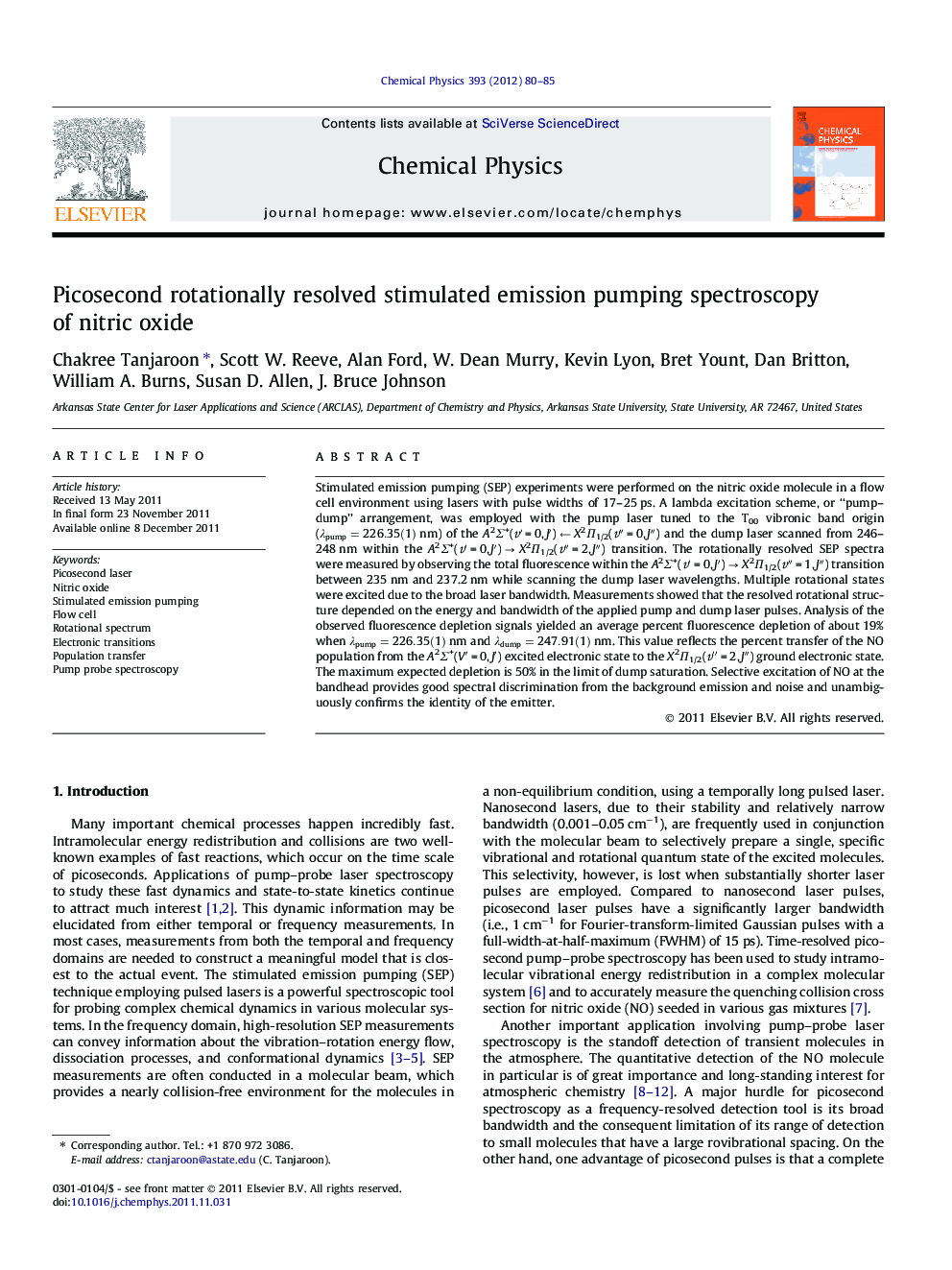| Article ID | Journal | Published Year | Pages | File Type |
|---|---|---|---|---|
| 5374602 | Chemical Physics | 2012 | 6 Pages |
Stimulated emission pumping (SEP) experiments were performed on the nitric oxide molecule in a flow cell environment using lasers with pulse widths of 17-25 ps. A lambda excitation scheme, or ''pump-dump” arrangement, was employed with the pump laser tuned to the T00 vibronic band origin (λpump=226.35(1)nm) of the A2Σ+(vâ²Â = 0, Jâ²) â X2Î 1/2(vâ³Â = 0, Jâ³) and the dump laser scanned from 246-248 nm within the A2Σ+(vâ²Â = 0, Jâ²) â X2Î 1/2(vâ³Â = 2, Jâ³) transition. The rotationally resolved SEP spectra were measured by observing the total fluorescence within the A2Σ+(vâ²Â = 0, Jâ²) â X2Î 1/2(vâ³Â = 1, Jâ³) transition between 235 nm and 237.2 nm while scanning the dump laser wavelengths. Multiple rotational states were excited due to the broad laser bandwidth. Measurements showed that the resolved rotational structure depended on the energy and bandwidth of the applied pump and dump laser pulses. Analysis of the observed fluorescence depletion signals yielded an average percent fluorescence depletion of about 19% when λpump=226.35(1)nm and λdump=247.91(1)nm. This value reflects the percent transfer of the NO population from the A2Σ+(Vâ²Â = 0, Jâ²) excited electronic state to the X2Î 1/2(vâ³Â = 2, Jâ³) ground electronic state. The maximum expected depletion is 50% in the limit of dump saturation. Selective excitation of NO at the bandhead provides good spectral discrimination from the background emission and noise and unambiguously confirms the identity of the emitter.
Graphical abstractDownload full-size imageHighlights⺠Stimulated emission pumping for nitric oxide was studied using picosecond lasers. ⺠Weak and tightly focused pulses provide sufficient energy for population transfer. ⺠Selective excitation at the bandhead yields strong fluorescence depletion signals. ⺠We observe 19% population transfer to vâ³Â = 2 of the X2Î 1/2 ground electronic state.
